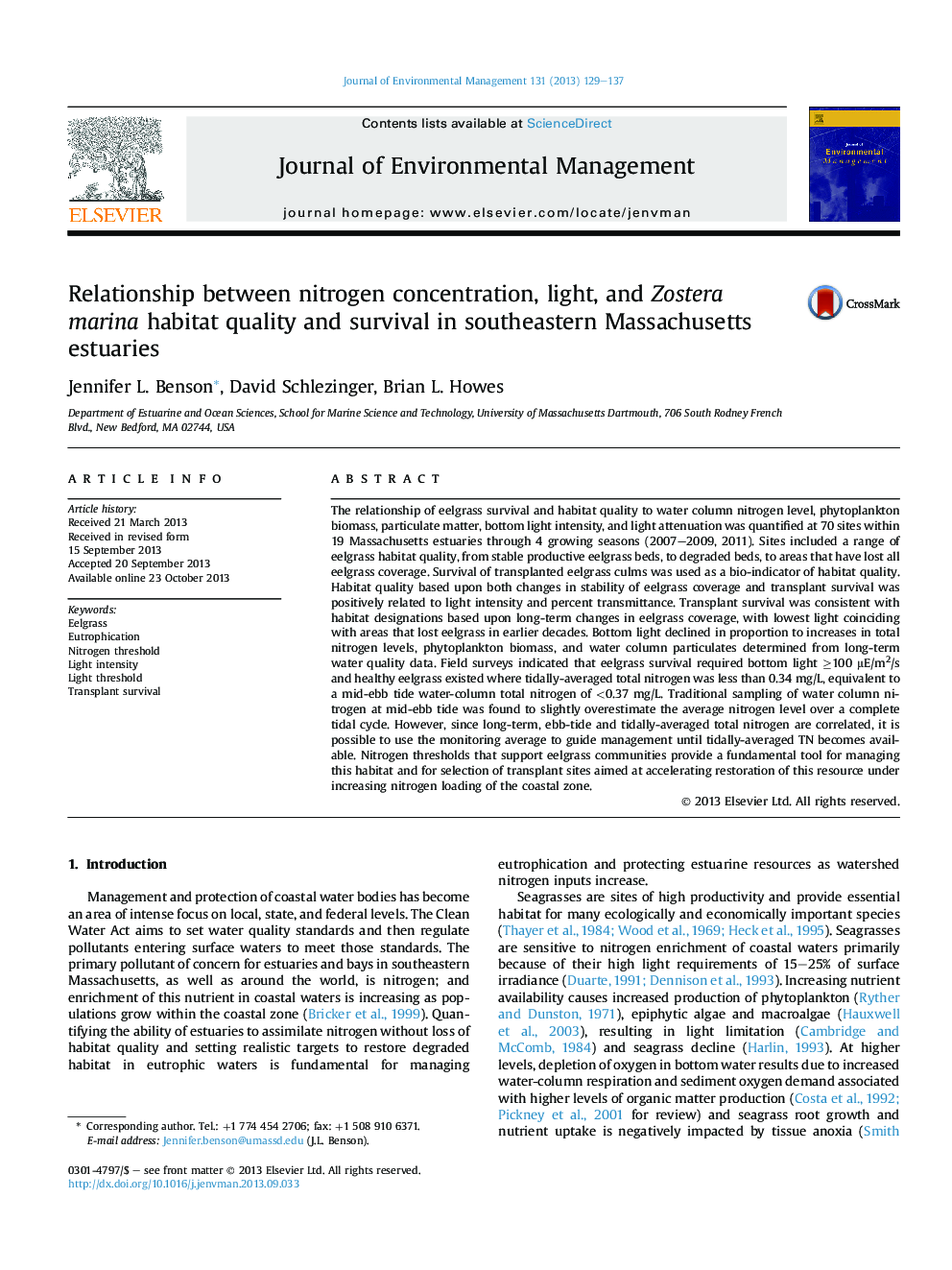| Article ID | Journal | Published Year | Pages | File Type |
|---|---|---|---|---|
| 1055942 | Journal of Environmental Management | 2013 | 9 Pages |
•We showed N-induced eutrophication lead to lower density and survival of eelgrass.•Bottom light for transplanted eelgrass restoration should be ≥100 μE/m2/s.•Natural eelgrass beds showed a light threshold of ∼70 μE/m2/s.•Eelgrass existed where tidally-averaged TN was <0.34 mg/L (mid-ebb tide <0.37 mg/L).•75th percentile yields a tidally-averaged TN of <0.36 mg/L (mid-ebb tide <0.38 mg/L).
The relationship of eelgrass survival and habitat quality to water column nitrogen level, phytoplankton biomass, particulate matter, bottom light intensity, and light attenuation was quantified at 70 sites within 19 Massachusetts estuaries through 4 growing seasons (2007–2009, 2011). Sites included a range of eelgrass habitat quality, from stable productive eelgrass beds, to degraded beds, to areas that have lost all eelgrass coverage. Survival of transplanted eelgrass culms was used as a bio-indicator of habitat quality. Habitat quality based upon both changes in stability of eelgrass coverage and transplant survival was positively related to light intensity and percent transmittance. Transplant survival was consistent with habitat designations based upon long-term changes in eelgrass coverage, with lowest light coinciding with areas that lost eelgrass in earlier decades. Bottom light declined in proportion to increases in total nitrogen levels, phytoplankton biomass, and water column particulates determined from long-term water quality data. Field surveys indicated that eelgrass survival required bottom light ≥100 μE/m2/s and healthy eelgrass existed where tidally-averaged total nitrogen was less than 0.34 mg/L, equivalent to a mid-ebb tide water-column total nitrogen of <0.37 mg/L. Traditional sampling of water column nitrogen at mid-ebb tide was found to slightly overestimate the average nitrogen level over a complete tidal cycle. However, since long-term, ebb-tide and tidally-averaged total nitrogen are correlated, it is possible to use the monitoring average to guide management until tidally-averaged TN becomes available. Nitrogen thresholds that support eelgrass communities provide a fundamental tool for managing this habitat and for selection of transplant sites aimed at accelerating restoration of this resource under increasing nitrogen loading of the coastal zone.
